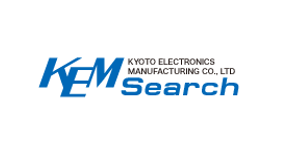KEM was established with capital stock of 2 million yen in Nakagyo-ku, Kyoto, with the aim of becoming a manufacturer and vendor of medical equipment and instruments for physics and chemistry, as well as a technical consultant.
History

Stage 1: Birth of KEM
(1961 to 1969)
Establishment of KEM
Kyoto Electronics Manufacturing Co., Ltd. (KEM) set out with two main pillars of business: the manufacture and sale of scientific instruments, medical instruments, and medical substance generators; and the export and sale of scintillation counters and pH meters produced by HORIBA, Ltd. Business conditions at the time were very severe, so following the appointment of Nagahiko Kishimoto as Representative Director and President, proactive steps were taken to increase the number of engineers and develop prototypes of the company’s own products, with the aim of becoming an analytical instrument manufacturer focusing on Karl Fischer moisture titrators.
-
Released Karl-Fischer moisture titrator (MK-S).

MK-S
-
Received approval from the Japanese Minister of Health and Welfare, and released calcium ionized water generator for medical equipment (Homelizer).
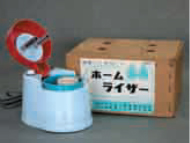
Homelizer
-
Nagahiko Kishimoto was appointed Representative Director and President, and capital stock was increased to 6 million yen.
Released thermal conductivity meter (TC-01).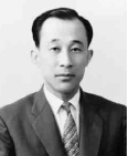
President Nagahiko Kishimoto
Started as an analytical instrument manufacturer.
Because of the “Securities Depression” in the year after the Tokyo Olympics (1964), domestic sales became stagnant for the first time since KEM was founded, and subcontract production also came to an end. Accordingly, in an effort to promote in-house rationalization, the Main Plant was moved to Fushimi-ku Kyoto, and the scale of the plant was reduced. However, this turning point created an opportunity for dramatic advancement, spurring on the development and sale of the KEM’s own products, and promoting the development and manufacture of specialized equipment with a number of companies.
Developed automatic potentiometric titrator and continuous analyzer for fluorine compounds in ambient air.
A potentiometric titrator (AT-05) developed in 1967 controlled the titration volume of reagents in accordance with the potential difference, thereby shortening titration times and preventing excess titration. As a result, it sold well immediately after its release.
In 1968, continuous analyzer for fluorine compounds in ambient air (HF-02) was released. This was developed on the basis of talks with an aluminum refining company. At that time, agricultural crop damage was a big issue, and hydrogen fluoride released from aluminum plants was the main cause of strife with farmers in various regions. With the successful development of this product, business deals with aluminum companies followed in quick succession. Over time, pollution problems became a significant societal focus, and pollution measuring instruments became mainstays of KEM.
-
Transferred the Main Plant to Fushimi-ku, Kyoto.
Released thermal conductivity meter (TC-22).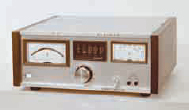
TC-22
-
Capital stock increased to 10 million yen.
Released portable turbidimeter (PC-05).
PC-05
-
Released automatic potentiometric titrator (AT-05), dissolved conductivity meter (CM-04), and Karl Fischer moisture titrator for process industry(PK-01).

AT-05
-
Capital stock increased to 15 million yen.
Released continuous analyzer for fluorine compounds in ambient air (HF-02) and trace moisture analyzer for process industry (DC-01).
DC-01
-
Transferred the Main Plant to Minami-ku, Kyoto.
Released Karl Fischer moisture titrators (MK-SS/AS, MK-A/AⅡ).

Main Plant
Stage 2 Establishing Infrastructure as an Analytical Instrument Manufacturer
(1970 to 1986)
Developed a succession of pollution measuring instruments.
Around the time when the Main Plant was transferred to Kisshoin, pollution problems were becoming a major societal concern, particularly four major pollution-related diseases in Japan including Minamata disease and Yokkaichi asthma. In this context, KEM developed and released a succession of pollution measuring instruments, starting with the development of continuous analyzer for fluorine compounds in ambient air (HF-02). Pollution measuring instruments contributed significantly to improving business performance. In an effort to further expand activities, at the Main Plant, additions and expansions were undertaken on a yearly basis.
-
Released improved continuous analyzer for fluorine compounds in ambient air (HF-05).
Released continuous analyzer for chlorine in ambient air (CL-06) and continuous analyzer for sulfur compounds (SX-16).
-
Capital stock increased to 20 million yen.
Released continuous analyzers for oxidant in ambient air (OX-01, OX-05), continuous analyzers for nitrogen oxides in ambient air (NX-05, NX-15), and continuous analyzer for hydrogen sulfide in ambient air (SL-02).
-
Completed the Stage 2 addition to the Main Plant.
Released continuous analyzers for sulfur dioxide in ambient air (SX-02, SX-05), and portable water quality meter (WP-02).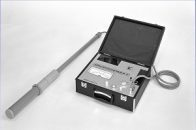
WP-02
-
Completed the Stage 3 addition to the Main Plant.
Released continuous analyzers for nitrogen oxides in flue gas (NX-21, NX-22).
KEM was registered as a measuring instruments manufacturing business based on the Japanese Measurement Act.
Made rapid progress regarding continuous analyzer for hydrogen chloride in flue gas.
In 1974, KEM was the first company in Japan to develop the analyzer HL-26 for continuous analysis of hydrogen chloride in flue gas released from waste incineration facilities. At the time, hydrogen chloride concentrations were analyzed manually. However, the process was so difficult that measurement results tended to differ even between specialists, and everyone believed that automatic analysis was impossible. For this continuous analyzer, KEM adopted a proprietary patented twin ion electrode method. It was an immediate commercial success due to its outstanding performance, which enabled long-term stable measurements. In addition to technological superiority, KEM quickly deployed a sales structure that proactively cultivated relationships with private plant manufacturers rather than relying on the conventional demand from government administration offices. As a result, KEM became a top manufacturer with this product, capturing approximately 90 % of the market share.
-
President Nagahiko Kishimoto received an award from the Japanese Minister of International Trade and Industry for meritorious deeds related to measurement.
KEM was licensed as a measuring instrument manufacturing business based on the Japanese Measurement Act, Article 13.
Released Karl Fischer moisture titrator (MK-HA) by coulometric titration and continuous analyzer for hydrogen chloride in flue gas (HL-26).
HL-26
-
Released continuous analyzer for total reducing sulfur compounds in flue gas (TRS-1A).
-
Released continuous analyzer for fluorine compounds in flue gas (HF-26).
Expanded market share with a succession of popular products: automatic potentiometric titrators, density/specific gravity meters, and Karl Fischer moisture titrators.
In terms of analytical Instruments for research, new models incorporating microcomputer technology were developed in succession in a variety of fields, with the aim of increasing sales and expanding the market.
In terms of potentiometric titrators, the new model integrated with a recorder (ATR-107) was released in 1977. In the following year, automatic piston burette (APB-107) and multiple sample changer (CHG-107) were released simultaneously, with the aim of expanding the market in accordance with enhancement of peripheral equipment. In 1982, new potentiometric titrator with built-in microcomputer (AT-118) was developed and sold. Sales were very good due to its excellent operability and enhanced functionality.
In 1978, KEM was the first Japanese manufacturer to release an oscillating U-tube method density/specific gravity meter to measure the density/specific gravity of liquids. It was sold as density/specific gravity meter (DA-101B) incorporating microcomputer control.
Further, in 1981, KEM developed and sold new Karl Fischer moisture titrators (MKS-1, MKA-3, and MKC-3), which significantly improved conventional functionality and user friendliness. In addition to conventional use for academic research and development, they became widely adopted by ordinary businesses for quality control. With these new models, KEM became synonymous with Karl Fischer moisture titrators, a position that has been steadfastly maintained.
-
Tokyo Office expanded and transferred to Koto-ku, Tokyo.
Released automatic potentiometric titration with recorder (ATR-107).
ATR-107
-
Masuko Kishimoto was appointed Representative Director and President.
Released continuous analyzer for moisture in flue gas (DC-26).
Released density/specific gravity meter (DA-101B) equipped with microprocessor.
Released automatic potentiometric titrator (AT-107), automatic piston burette (APB-107) , and multiple sample changer (CHG-107).
DA-101B
-
Completed the Stage 4 addition to the Main Plant.
Released portable DO meter (DO-06), automatic COD analyzer with sample changer (COD-101), and automatic sodium hypochlorite analyzer (NM-101).
NM-101
-
Released high temp thermal conductivity meter for high temperature (TC-51).

TC-51
-
Released Karl Fischer moisture titrators (MKS-1, MKA-3, and MKC-3).
Released continuous analyzer for fluorine compounds in ambient air (HF-19) and continuous analyzer for hydrogen chloride in ambient air (HL-19).
-
Established the Osaka Office in Higashi-ku, Osaka.
Capital stock increased to 30 million yen.
-
Released conductivity meters (CM-115, CM-117).
-
Transferred the Tokyo Office to Chiyoda-ku, Tokyo.
Released automatic potentiometric titrator (AT-200) and automatic piston burette (APB-118).
AT-200
Acquired the thermal measuring instruments department of Showa Denko.
In 1986, KEM acquired all patents, and manufacturing and sales rights related to thermal measuring instrument business from Showa Denko, a top manufacturer of heat flow meters and thermal conductivity meters. A thermal measuring instrument from Showa Denko became the first heat flow meter (HFM-MR) released by KEM. Next, KEM began sales of a quick thermal conductivity meter (QTM-D3) obtained from the same acquisition while also releasing a new thermal manikin (thermal insulation measuring instrument) in the shape of the human body, capable of measuring indoor temperature fluctuations. These vaulted KEM to a top manufacturer in the thermal measurement field.
-
Masuko Kishimoto was appointed Representative Director and Chairperson, and Yoichi Ueda was appointed Representative Director and President.
Released conductivity meter for ultrapure water (CM-117S).
Acquired Showa Denko’s thermal measuring instrument business, and released heat flow meter (HFM-MR), quick thermal conductivity meter (QTM-D3), and thermal manikin.
QTM-D3
Stage 3 Aiming for International Predominance
(1987 to 2005)
Highly functional and operable models became successful products.
- Density/specific gravity meter with built-in thermostatic functionality, and automatic potentiometric titrator with interactive displays and built-in floppy disk drive
In 1987, oscillating U-tube method density/specific gravity meter became accredited for concentration measurements of crude oil and petroleum products as per JIS standard. KEM took this opportunity to release new density/specific gravity meters (DA-200 and 210). Further, in 1989, KEM developed and released groundbreaking models of these products (DA-300 and 310) with built-in constant temperature cell for setting the measurement temperature range, a world’s first. This significantly reduced measurement times and increased precision, improving stability. The new models had explosive sales, and became widely adopted not only for conventional concentration measurements of crude oil and petroleum products but also for quality control by soft drink manufacturers and in relation to Japanese sake and other alcohol products.
In terms of automatic potentiometric titrators, in 1988, an interactive display model with built-in floppy disk drive (AT-310) was released. The excellent functionality and operability of this product made it very popular. As a result, KEM captured the top share of the Japanese market for potentiometric titrators, which had an impact even on overseas markets.
-
Established the Fukuoka Local Office in Hakata-ku, Fukuoka.
Released density/specific gravity meters (DA-200, DA-210). Six models including the AT-210 automatic potentiometric titrator and the MKC-210 Karl Fischer moisture titrator were selected as Good Design Products by the Japanese Ministry of International Trade and Industry.
MKC-210
-
Acquired land for building the Second Plant in Minami-ku, Kyoto. Elevated the Fukuoka Local Office to the Fukuoka Office.
Released automatic potentiometric titrator (AT-310).
Released multiple point heat flow meter (HFM-115).
Released continuous analyzer for mercury in flue gas (HG-26).
-
Released density/specific gravity meters (DA-300, DA-310) with built-in constant temperature cell, and portable density/specific gravity meter (DA-110).

DA-300
Constructed the Second Plant and the Kyushu Laboratory.
The heat measuring instruments business was expanding, the new models of the automatic potentiometric titrators and density/specific gravity meters were popular, and production was increasing due to the provision of OEM items to overseas agents. As a result, space at the Main Plant became inadequate, and in 1990, the Second Plant was built on land close to the Head Office.
Following completion of the Second Plant, the Kyushu Laboratory was established in Kitakyushu City in 1993, with the goal of strengthening the research and development system for heat flow meters, thermal conductivity meters, and other heat measuring instruments.
-
Established and operated the Second Plant in Minami-ku, Kyoto. Established the Yokohama Local Office in Kanagawa-ku, Yokohama.

Second Plant
-
Transferred the Osaka Office to Kitahama, Chuo-ku, Osaka. Elevated the Yokohama Local Office to the Yokohama Office.
-
Purchased land for the Kyushu Laboratory in Kitakyushu Techno Park (Tobata-ku, Kitakyushu), and began Stage 1 construction.
Released automatic potentiometric titrator (AT-400) and density/specific gravity meter (DA-100).
AT-400
Developed heat stroke checkers to prevent heatstroke.
In 1993, KEM developed and released a heat index meter (WBGT-101) to measure WBGT values for the purpose of preventing heatstroke. Miniature versions of WBGT-101, the portable heat stroke checkers (WBGT-103 series) became popular products and were adopted in many situations, such as at sporting venues, and at building sites and other places where manual labor was performed.
These checkers were later supplied for the Atlanta Olympics, and received a commendation from Japan Association of Athletics Federations in 1996. In 2003, through a partnership with the Japan Weather Association, information on preventing heatstroke from 48 locations nationwide was released on their website.
-
Established the Kyushu Laboratory and Kyushu Office.
Tokyo Office expanded and transferred to Chiyoda-ku, Tokyo, and integrated with the Yokohama Office.
Released heat index meter (WBGT-101) and amenity meter (AM-101). Body temperature sensor for air conditioning passed technical evaluation tests by the Japanese Ministry of Construction, and KEM received a written evaluation.
Released continuous analyzer for hydrogen chloride in flue gas (HL-36). Later in 1997, the measurement principle was specified in JIS 7984 "Continuous analyzer for hydrogen chloride in flue gas".
Released dust monitor in flue gas (HD-26).
Kyushu Laboratory Construction Commencement Party
Developed refractometer using proprietary technology.
In 1994, refractometer (RA-510) was developed to analyze components in foods and chemical products. It was intended to become a core product in the field of analysis instruments for research. In a world’s first, the built-in temperature control for setting the measurement sample temperature, which was achieved through the development of density/specific gravity meters, was applied to refractometer. Incorporation of this function significantly reduced measurement times and enabled high-accuracy measurements, thereby having a major impact.
In 1998, new model (RA-500) was released with an expanded measurement targets to accommodate even flavors and petroleum products with a high refractive index. This model was deployed widely, not only for sale in Japan but also in overseas markets.
In 2002, in a world’s first, portable brix meter (RA-150), which was digital and easy to carry, was developed. Conventionally, hand-held refractometers were widely used at food factories, but this model was welcomed by customers as a groundbreaking alternative.
-
Released refractometer (RA-510).
Released continuous analyzer for mercury in flue gas (HG-36).
Released quick thermal conductivity meter (QTM-500).
RA-510
-
Released automatic analyzer for total phosphorus and total nitrogen (WPA-31).
KEM was registered and accredited for ISO 9002 (international quality assurance standards) by Japan Quality Assurance Organization (JQA).
WPA-31
-
KEM was awarded the 21st Invention Award Sasakawa Special Prize for the Karl Fischer moisture titrator electrode potential detection method. The prize was awarded by the Japan Society for the Advancement of Inventions and by Nikkan Kogyo Shimbun.
Received a commendation from Japan Association of Athletics Federations for supplying heat stroke checkers to the Atlanta Olympics.
Released Windows software for automatic potentiometric titrators (AT-Win).
Released beer analyzer (DRA-510B).
Plaque for the Invention Award Sasakawa Special Prize
-
Acquired the Third Plant in Minami-ku, Kyoto.
Released gas volume analyzers (GVA-500 series).
Released Karl Fischer moisture titrators (510 series).
GVA-500
-
Extended the Second Plant.
Created a website.
Released thermal conductivity analyzer by laser flash method (LFA-502) and thermal conductivity meter by hot disk method (TPA-501) in domestic market.
KEM was registered and accredited for ISO 9001 by JQA.
LFA-502
-
Released automatic potentiometric titrator (AT-510).
-
Released thermal manikin for firefighter suit.
KEM was registered and accredited for ISO 14001 by JQA.
-
Released ultrasound density meters for process industry (USP-58 series).
Released continuous analyzer for hydrogen chloride in flue gas (HL-36N).
Released portable density/specific gravity meter (DA-130) .
USP-58
Received JCSS agency accreditation for density standard liquids and density/specific gravity meters.
In 2002, KEM was accredited as a calibration laboratory for density standard liquids and oscillating U-tube method density/specific gravity meters, a first for Japan, under the Japan Calibration Service System (JCSS) based on the Japanese Measurement Act. As a result, KEM became capable of issuing calibration certificates with the JCSS seal certifying traceability to national measurement standards.
-
Released heat stroke checkers (WBGT-103 series).
Released portable brix meter (RA-150).
Accredited as a density calibration laboratory, the first in Japan, by the National Institute of Technology and Evaluation (NITE).
WBGT-103F
-
Yoichi Ueda, Representative Director and President (at the time) was awarded the Order of the Rising Sun, Gold and Silver Rays for contributions to the development of the analytical instrument industry.
Released Karl Fischer moisture titrator [volumetric titration] (MKA-610) and Karl Fischer moisture titrator [coulometric titration] (MKC-610), which are capable of simultaneous titration by volumetric method and coulometric method is possible.
Certificate and Decoration of the Order of the Rising Sun, Gold and Silver Rays
-
Donated 50 million yen to Ehime University and established the KEM Environmental Analytical Chemistry Program (until 2007).
KEM was awarded the 29th Invention Award Fukuda Special Prize for ultrasonic velocity measurement methods. The prize was awarded by the Japan Society for the Advancement of Inventions and by Nikkan Kogyo Shimbun.
Released alcohol meter for refined sake (DA-105).
Released continuous analyzer for mercury in flue gas (HG-37) in domestic market.
-
Transferred the Tokyo Office to Kudan, Chiyoda-ku, Tokyo.
KEM was recognized for corporate excellence by the Shimogyo tax office superintendent.
Released sample preparation device for dioxin (SPD-600) and dioxin biosensor (DXS-600).
Stage 4: Cultivation of New Markets
(2006 to 2013)
Cultivation of new international markets
In 2007, the Overseas Sales & Marketing Dept. became independent of the Sales & Marketing Div. (at the time), and began a proactive sales. In order to expand sales markets, KEM exhibited in global exhibitions including ARABLAB (Dubai, UAE) in 2007, and PITTCON (New Orleans, USA) and analytica (Munich, Germany) in 2008, striving to improve KEM brand recognition and technological appeal.
In addition, partnerships with influential companies in a variety of countries were proactively pursued, as was the cultivation of global markets by signing exclusive distribution rights agreements, jointly developing products, and co-hosting exhibitions and seminars.
In 2007, in response to an increase in customers and an expansion of production scale due to proactive overseas development, the Third Plant was constructed on land acquired in the vicinity of the Main Plant.
-
Released specific heat meter for liquid (SHA-500).
Released dust monitors in flue gas (HD-37, KD-37C) in domestic market.
SHA-500
Released methanol concentration meter and sweating thermal manikin.
Embedded methanol concentration meter for portable fuel cells was released in 2007, and had a significant impact as a product contributing to the practical use of fuel cells, a promising alternative energy source aimed at preventing global warming.
That same year, KEM thermal manikin was adopted as a manikin for firefighter suit for evaluating the heat resistance and fire proof properties of firefighting apparel by the Japanese Fire and Disaster Management Agency, expanding the scope of their application. In 2008, KEM developed and released sweating thermal manikin as an application of thermal manikin. This manikin combined KEM’s proprietarily developed a thermal environment measuring instrument with a perspiration system equivalent to that in humans, and was capable of creating the conditions that exist when people perspire. This was sold primarily for research into the comfort of materials in the textile industry.
-
Established and operated the Third Plant in Minami-ku, Kyoto.
Elevated the Tokyo Office to the Tokyo Branch.
KEM was selected by the Japanese Small and Medium Enterprise Agency as one of the 300 proactive small and medium manufacturing companies.
Released methanol concentration meter (MCM-600).
Third Plant
-
Established the Nagoya Office in Nagoya and the Sendai Office in Sendai.
Chairperson (at the time) Yoichi Ueda was appointed President of the Kyoto Scientific Instruments Association.
Released alcohol density/specific gravity meter (DA-155).
Released laser gas analyzers (KLA-1 series) in domestic market.
Released sweating thermal manikin in domestic market.
-
Established KEM China through joint investment in Shanghai, China. Established West Japan Customer Support (Shunan) in Shunan City, Yamaguchi.
Released the latest models of refractometers (RA-600 series).
Released density/specific gravity meters (DA-600 series).
Released portable heat stroke checkers (WBGT-200 series).
DA-600
-
The Japanese Ministry of the Environment included the KEM’s simple dioxin analysis system in the notification law entitled “Simple Measurement Method for Dioxins in Flue Gas, Dust, and Cinders (Bioassay Method)” and mentioned the PCB analysis system in the “Simple Measurement Method Manual Related to Trace Quantity PCBs in Insulating Oil.”
Released simple luminance measuring instrument (GSC-102). This is for maintenance and management of photoluminescence high-intensity guidance signs conforming to the Fire Service Law of Japan, This was evaluated by the Fire Equipment and Safety Center of Japan.
Acquired JCSS agency accreditation for refractive index standard liquids and refractometers.
Subsequent to density standard liquids and density/specific gravity meter in 2002, KEM was accredited as a JCSS calibration laboratory for refractive index standard liquids and refractometers in 2011. KEM was the first company in Japan compliant with the international mutual recognition agreement (MRA) regarding calibration of refractive index standard liquids and refractometers, and was also internationally recognized, thereby providing fundamental support for the reliability of test and measurement data.
-
Celebrated the 50th anniversary of KEM.
Honored with testimonials from Fukushima City and Hachinohe City for assistance during the 2011 Great East Japan Earthquake.
Released automatic potentiometric titrator (AT-700) and multiple sample changer (CHA-700).
Released portable brix meter (BX-1).
KEM was recognized by the National Institute of Technology and Evaluation (NITE) as a calibration laboratory for refractive index standard liquids and refractometers.
AT-700
Released SD type quick alcohol measurement systems and EMS viscometers.
In 2012, KEM released quick alcohol measurement system with steam distillation (SD-700), developed in cooperation with sake manufacturers. This instrument measures the concentration of alcohol in alcoholic beverages by utilizing density/specific gravity meter technology. Having passed the stringent evaluations of the Japanese National Tax Agency, this measurement method was recognized as “a rational and accurate alternative to the analysis method prescribed by the National Tax Agency.” It was well received primarily by the Japanese sake industry for its significant contributions to labor and time savings.
In 2013, electro magnetically spinning viscometer (EMS-1000) developed in cooperation with The University of Tokyo provided non-contact measurement, the first such functionality in the world. This cleared the way for measurements of samples that were difficult or complicated to measure using conventional methods.
-
Released all-in-one analyzer for measuring density/specific gravity and refractive index (ASCA-6400).
EMS viscometer received the SRJ Technical Development Award.
Karl Fischer moisture measuring instruments were recognized as a heritage of analytical and scientific instruments.
Released quick alcohol measurement system with steam distillation (SD-700) in domestic market.
Certificate of the Heritage of Analytical and Scientific Instruments
-
Transferred the Tokyo Branch to Shinjuku-ku, Tokyo.
Released hybrid Karl Fischer moisture titrator (MKH-700).
Released EMS viscometer (EMS-1000), created through cooperative development with the Institute of Industrial Science, The University of Tokyo.
EMS-1000
Stage 5: New Product Development and Overseas Strategies
(2014 to Present)
Further inroads into global markets
Further focus on overseas markets, with their prolonged favorable sales, became necessary. The number of employees in the overseas department was increased, and globalization of business activities has been pursued. In the first half of 2016, KEM exhibited at the world class PITTCON (USA) and analytica (Germany) exhibitions. During the same period, contracts were signed with sales representatives in order to guarantee a sales network in Eastern Europe. Additionally, secondment agreements were signed with sales representatives in the Southeast Asian region, enabling the dispatch of employees for the purpose of market research in this region.
Developed new products with consideration to the needs of customers overseas.
In accordance with full scale inroads overseas, product development has been pursued in line with the needs of overseas markets. Typical of the models released in 2014 were Karl Fischer moisture titrators (MKV-710 and MKC-710) and automatic potentiometric titrator (AT-710), which were miniaturized and made easier to operate following the model change. In anticipation of expanded sales overseas, some products acquired CE markings and other standards, and multilingual support was added for their LCD screen and instruction manuals.
-
Kyoko Kishimoto was appointed Representative Director and President.
Elevated the Osaka Office to the Osaka Branch, and the Kitakyushu Office to the Kyushu Branch.
Transferred the Fukuoka Office to Hakataekichuougai, Hakata-ku, Fukuoka.
Released mercury analyzers (MD-700 series).
Released multiple auto sampler for SDK system(CHAL-700) in domestic market. SDK system the combination of SD-700 and CHAL-700 was completed.
Released the latest model of continuous analyzer for hydrogen chloride in flue gas (HL-36NS) in domestic market.
Released the latest gas volume analyzers (GVA-700 series).
-
Transferred the Nagoya Office to Naka-ku, Nagoya. In place of the Kitakyushu Office, the Fukuoka Office became the Kyushu Branch.
-
Participated, as the main sponsor, in the ICR2016 International Congress on Rheology in Kyoto.
Released the latest models of quick thermal conductivity meters (QTM-700 series).
-
KEM was selected as one of the companies driving regional growth.
Released the latest model of automatic analyzer for total phosphorus and total nitrogen (WPA-1000) in domestic market.
JIS B 7922 “Electronic Wet-bulb globe temperature (WBGT) index meter” was established , and portable heat stroke checkers (WBGT-200 series) became compliant with this standard.
-
Transferred the Osaka Branch to Otemae, Chuo-ku, Osaka.
Released the latest model of hybrid Karl Fischer moisture titrator (MKH-710).
Released the latest model of EMS viscometer (EMS-1000S) .
-
Released alcohol meter (ALM-155).
-
Released the latest models of density/specific gravity meters (DA-800 series).
Quick Links
Protection of Personal Information and Use of Cookie
This website uses cookies on some pages in order to ensure customers’ comfortable use of the website. When you use this website, please agree to our use of cookies.
If you continue to browse this website even without agreeing to our use of cookies, we consider that you have consented to our use of cookies. You can block cookies by changing your browser settings.



